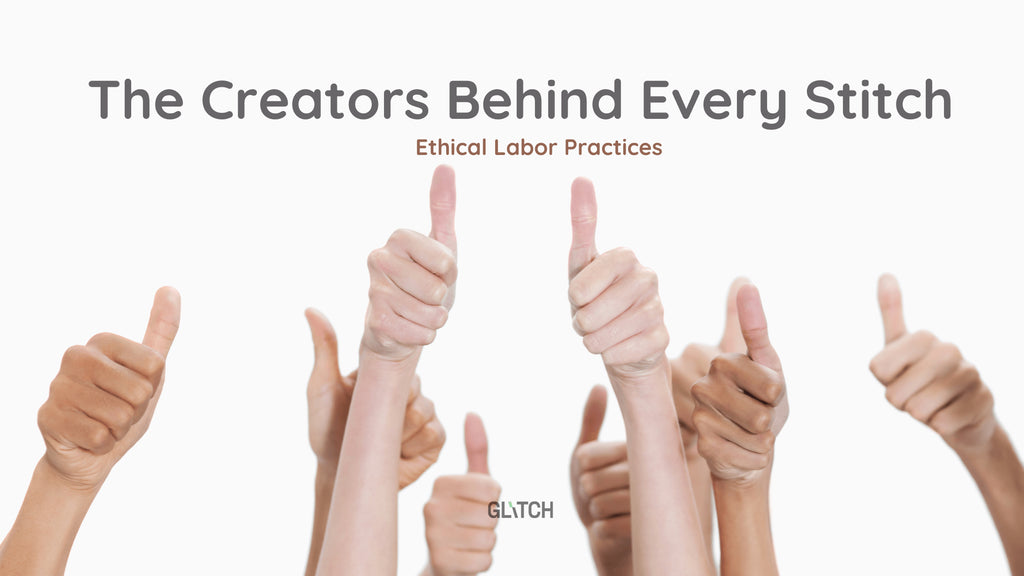Ethical Labor Practices – The Creators Behind Every Stitch

The fashion industry is a symphony of creativity, skill, and dedication. Behind every garment lies the artistry of countless hands, from the loom operator weaving intricate patterns to the tailor stitching with precision and the artisan dyeing fabrics in vibrant hues. These hands belong to the creators and artists of the industry—the workers who bring every design to life. Ethical labor practices are not just about fair wages and safe workplaces; they’re about recognizing these individuals as the heart and soul of fashion.
A Shift in Perspective: Workers as Artists
Traditionally, workers in the fashion supply chain have been overlooked, their contributions undervalued. But the tides are turning. Ethical labor practices have redefined the narrative, placing these individuals in the spotlight. They are not just laborers; they are artists whose craftsmanship and dedication breathe life into every piece of clothing we wear. From the loom to the dye vat, each step in the process is a testament to their skill and creativity.
The Lifecycle of a Garment: A Tribute to the Makers
Looming: The Weavers’ Art
The journey of a garment often begins at the loom. Here, skilled weavers intertwine threads with precision and artistry to create fabric. This is no ordinary task; it requires years of practice and an innate understanding of texture, tension, and design. Ethical labor practices ensure that these weavers are provided with safe working conditions, fair pay, and the recognition they deserve for their invaluable contributions.
Stitching: Precision and Passion
Once the fabric is ready, it moves to the hands of tailors and seamstresses. These artisans work tirelessly to cut and stitch the fabric into garments, turning flat pieces of cloth into wearable art. Their work is meticulous, demanding an eye for detail and a deep understanding of design. Ethical labor practices treat these workers not as mere laborers but as skilled professionals whose efforts define the quality and appeal of the final product.
Dyeing: Bringing Color to Life
The vibrant hues that make garments stand out are the result of the dyers’ expertise. Using eco-friendly and non-toxic dyes, these artisans create rich, lasting colors that add personality to the fabric. Dyeing is both a science and an art, requiring precision, creativity, and a commitment to sustainability. Ethical labor practices ensure that dyers work in safe environments, free from harmful chemicals, and receive the respect and recognition they deserve.
Why Ethical Labor Practices Matter
Dignity and Respect
Ethical labor practices uphold the dignity of workers, treating them as integral members of the fashion industry. By providing fair wages, safe working conditions, and opportunities for growth, these practices empower workers and recognize their contributions as essential to the industry’s success.
Sustainability Starts with Workers
Sustainability in fashion is not just about using eco-friendly materials; it’s also about creating a sustainable workforce. Ethical labor practices ensure that workers are not exploited, reducing turnover and fostering long-term relationships. This stability allows workers to hone their skills and contribute to a more sustainable fashion ecosystem.
Celebrating Craftsmanship
Every garment is a work of art, and ethical labor practices celebrate the craftsmanship that goes into its creation. By valuing the skills and creativity of workers, these practices elevate the industry as a whole, encouraging innovation and quality.
Challenges and Opportunities
The Cost of Ethical Practices
Implementing ethical labor practices can be costly for brands, as it requires investments in fair wages, safe working conditions, and training programs. However, these costs are an investment in the future of fashion, creating a more sustainable and humane industry.
Consumer Responsibility
As consumers, we have the power to drive change. By supporting brands that prioritize ethical labor practices, we send a message that we value the people behind our clothes. Looking for certifications, such as Fair Trade or SA8000, and asking questions about a brand’s labor practices can make a significant impact.
A Vision for the Future
The fashion industry is at a crossroads. Ethical labor practices offer a path toward a more humane, sustainable, and innovative future. By valuing the hands behind the fabric, we can create a fashion industry that is not only beautiful but also just.
Imagine a world where every garment tells a story of creativity, dedication, and respect. This is the promise of ethical labor practices. It’s a promise that elevates the creators and artists behind every stitch, ensuring that their contributions are recognized and celebrated. Together, we can build a fashion industry that honors the hands that make it possible, one garment at a time.
Shop now and be a part of it


















